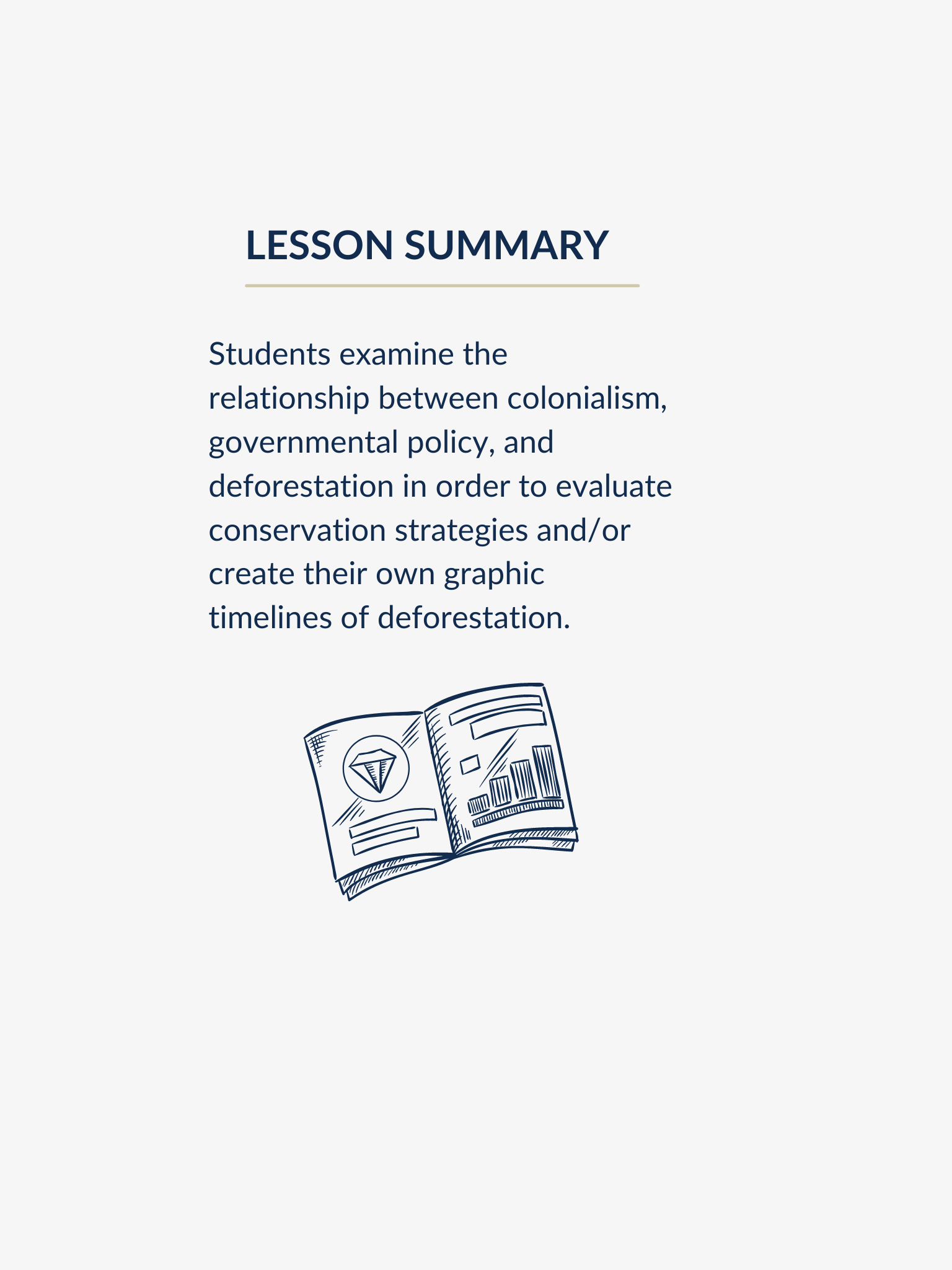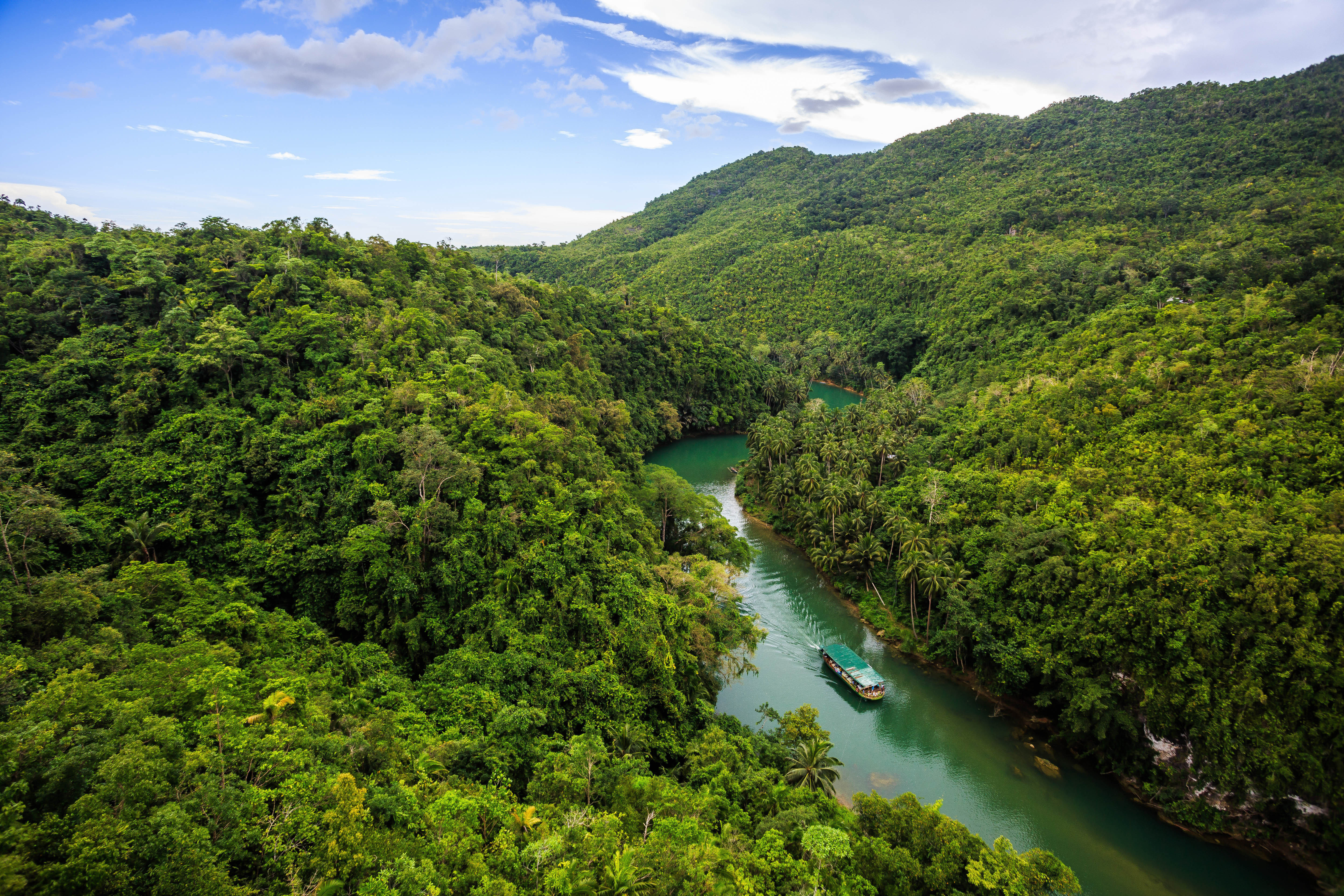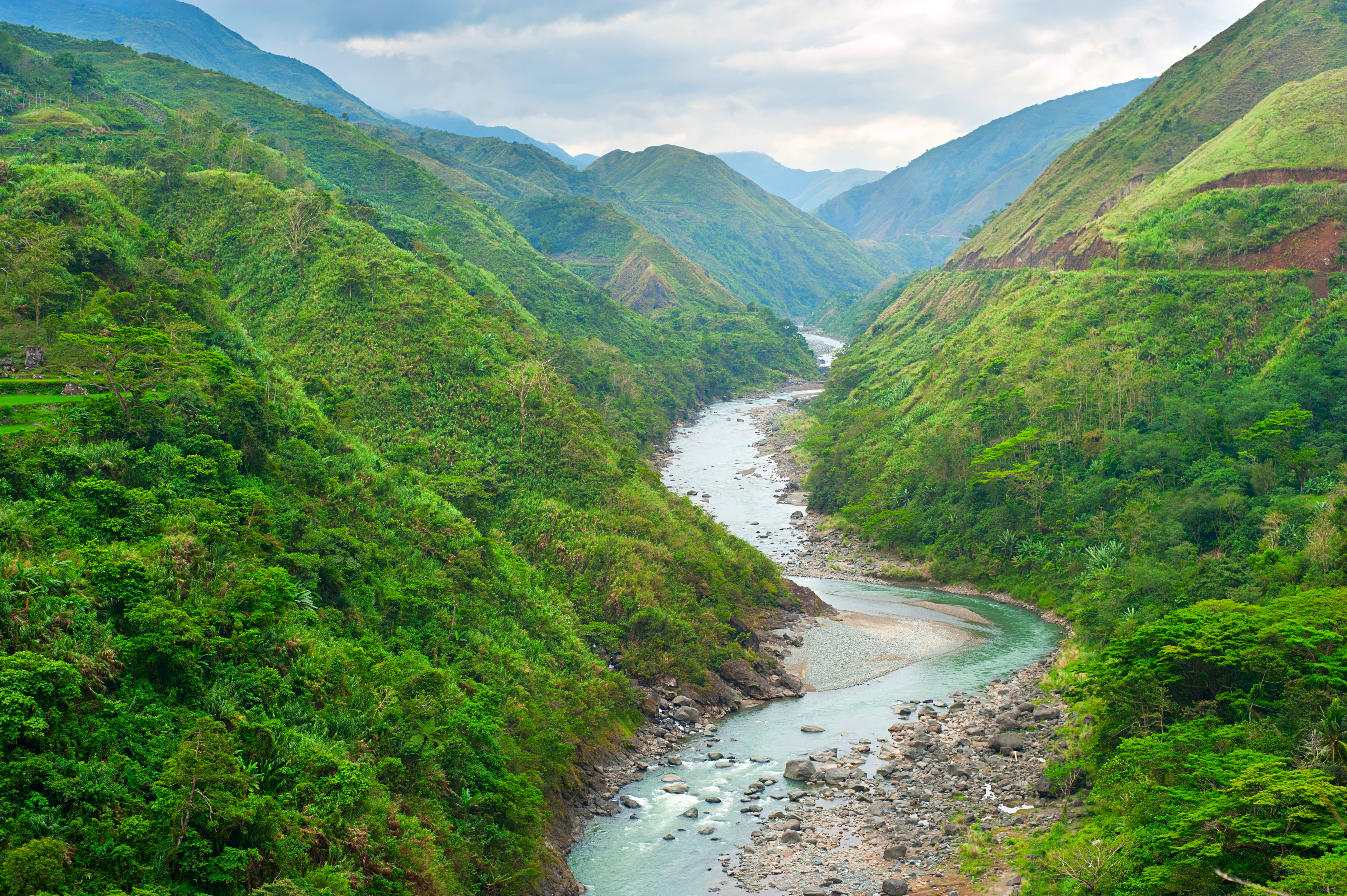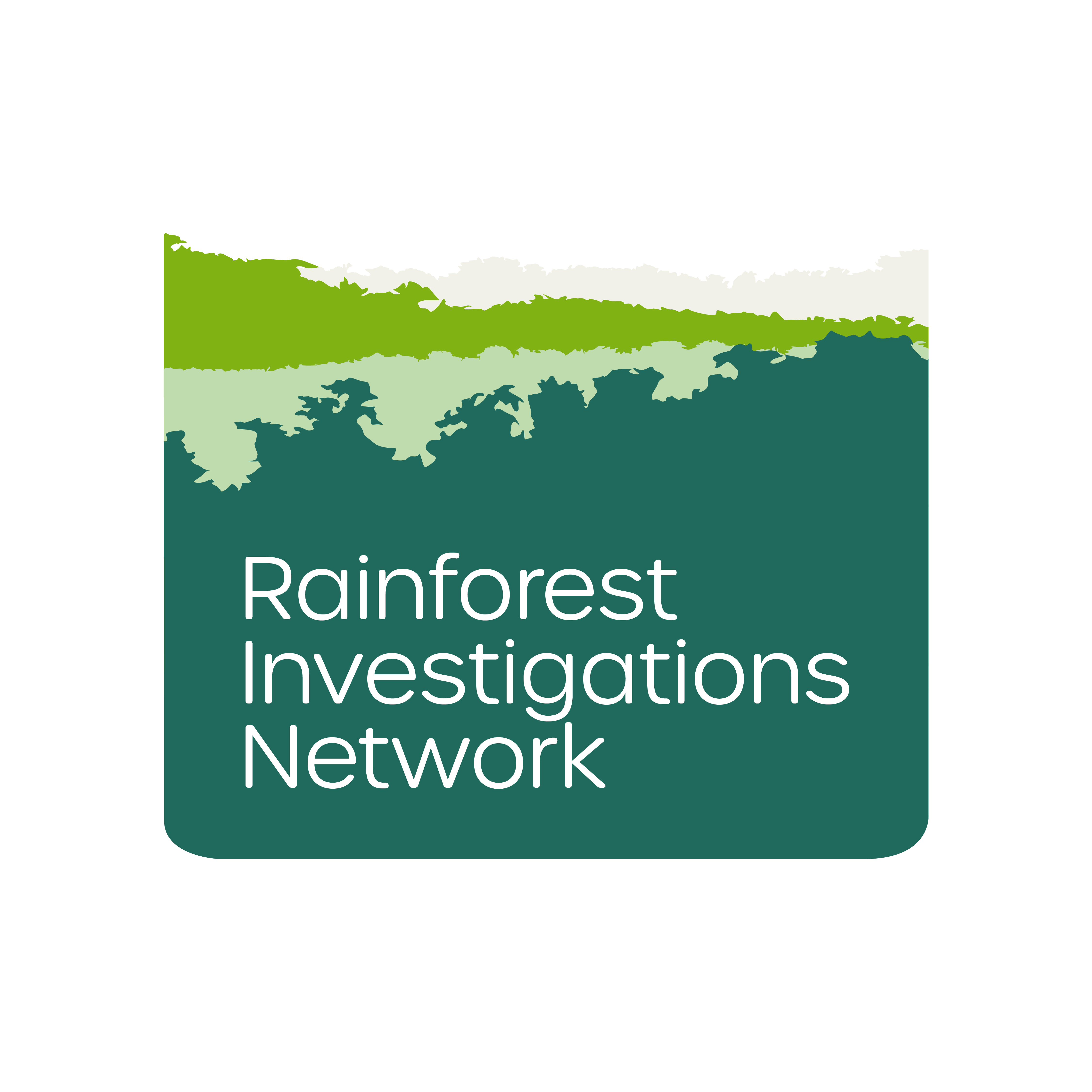Warm-up: Students discuss their understanding of deforestation and conservation, and evaluate a graph showing forest coverage over time in the Philippines.
Analyzing the Reporting: Students explore the multimedia timeline "Losing, Saving Philippine Forests” by Karol Ilagan, a journalist and editor with the Philippine Center for Investigative Journalism. They respond to comprehension and discussion questions in order to track and analyze the influence of colonialism, dictatorship, and governmental policies on environmental degradation and conservation.
Extension Activities:
- Creating Your Own Multimedia Timeline of Deforestation
- Visualizing Environmental Issues Through Infographics
- Researching Forest Conservation Policies
- Writing a Letter to the Editor
- Art for Change
Objectives:
Students will be able to...
- Determine the central ideas of a story that explains how colonial policies and measures led to mass deforestation in the Philippines.
- Analyze the relationship between exploitative colonial policies and environmental degradation.
- Examine the post-colonial and post-dictatorship history of the Philippines and the conservation policies introduced over time.
- Use research, writing, and art skills to engage with the reporting.
Warm-up:
1. As a class, discuss:
- What is deforestation?
- Why do you think deforestation happens? What motivates people to cut down trees?
- What do you think can encourage people to conserve forests?
2. Explore the graph below from the Philippine Center for Investigative Reporting, and answer the following questions:
- What major trends can you identify by exploring this graph?
- Predict: What do you think happened to motivate those trends?
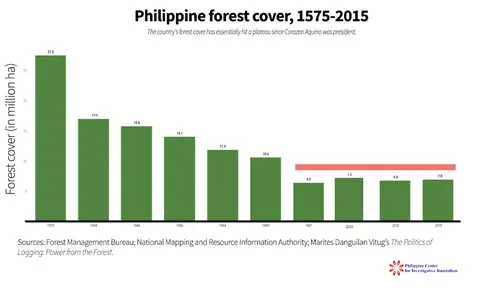
Introducing the Lesson:
More than 90% of the Philippines was covered by forests prior to the arrival of Spanish colonizers. While Indigenous people considered the forests sacred, the Spanish empire saw forests as property they could exploit for economic gain. Deforestation, destruction of Indigenous rights, and exploitative policies were a fixture of Spanish colonial rule (1521-1898) and American colonial rule (1898-1946). Similar policies would continue under the kleptocratic dictatorship of (1965-1986), with personal friends and strategic allies receiving large timber concessions. The post-colonial and post-dictatorship era Philippines history has seen the introduction of a variety of conservation and reforestation policies and programs that continue today. Despite these efforts, the Philippines continues to feel the effects of the widespread environmental degradation that took place beginning with colonization.
In this lesson, students will analyze and discuss "TIMELINE: Losing, Saving Philippine Forests” by Karol Ilagan, a journalist and editor with the Philippine Center for Investigative Journalism. Through this interactive, graphic timeline, students will examine how Philippine forests were managed (and plundered) from pre-colonial times to the present, exploring the relationship between colonialism, governmental policy, and deforestation. Ultimately, students will be able to evaluate environmental conservation strategies in their communities and around the world, and/or create their own visual representations of deforestation across time modeled on the timeline they explore.
Some useful vocabulary for this lesson:
- Colonialism
- Extraction
- Deforestation
- Timber concession
- Dictatorship
- Martial law
- Sustainable development
Introducing the Reporting:
In this story, journalist Karol Ilagan uses a multimedia timeline to detail how exploitative Spanish and American colonial policies led to unprecedented levels of deforestation in the Philippines, and how post-colonial / post-dictatorship conservation policies have attempted to address this massive loss.
Students may explore the timeline independently or in small groups while answering the comprehension questions below. Alternatively, the teacher may project the timeline for students, and comprehension questions may be answered as a class.
Comprehension Questions:
Pre-colonial period
- How much of the Philippines was covered by forests before its colonization by Spain?
- What were people’s relationships to the forests like prior to Spanish colonization?
Spanish colonial period
- How did Spanish colonizers see the forests?
- Under Spanish rule, the first forest agency was established. What was its purpose?
- How much of the Philippines was covered by forests at the end of Spanish colonial rule?
American colonial period
- What does the United States want to do with wood from Philippine forests?
- At the School of Forestry, what do Americans teach students?
The Marcos years - dictatorship period
- To whom does president Marcos extend Timber License Agreements?
- True or false: The Forestry Reform Code of the Philippines, which promoted commercial logging, is still the primary forestry code in the country today.
The Cory years - post-dictatorship period
- Name one forestry program introduced by the Cory Aquino government. What is the purpose of this program?
- Describe one policy introduced by the Cory Aquino government to protect forests.
The Ramos Years - post-dictatorship period
- What is the objective of the Community Based Forest Management system?
- What is the purpose of The Indigenous People’s Rights Act?
1998-2021
- Describe one government policy designed to protect forests.
- Name one natural disaster that took place during this period, and explain how it is related to deforestation.
- What is excluded from the Philippines' “nationally determined contribution” to the Paris agreement?
Reflection and Discussion:
Use details from the story and your own reflections and experiences to respond to the following questions. These questions can be explored as part of whole-class discussions, small-group discussions, or individual reflections.
- What new information did you learn? Did anything surprise you?
- How has colonization had a direct impact on forests in the Philippines? What characteristics of colonialism / colonizers might encourage deforestation and discourage conservation?
- How did the dictatorship under Marcos impact forests in the Philippines? What characteristics of dictatorships / kleptocracies might encourage deforestation and discourage conservation?
- Describe some of the policies and programs Philippine leaders have developed in an effort to recover from years of damage to the forests.
- Which policies and programs do you think are strong solutions to the problems of deforestation and environmental degradation?
- Can you think of any additional solutions that you think could be successful?
- What are some of the challenges to recovery from environmental degradation in the Philippines?
- Why is it important to learn about the environmental impacts of colonial policies?
- How has colonialism influenced the environment in your own community? (If you're not sure, do some research!)
- What are some of the major environmental challenges your community is facing? How do you think policy (at the local, state, or federal level) could best address those challenges?
Extension Activities
Option 1. Creating Your Own Multimedia Timeline of Deforestation
This reporting features a multimedia timeline that connects government policies and programs to rates of deforestation in the Philippines. With this timeline in mind, research rates of deforestation over time in your country of residence, or a country of your choice. Using the Knight Lab platform, create your own multimedia timeline. Like Ilagan’s, your timeline should connect deforestation trends to specific (colonial and/or post-colonial) government policies and programs. Include the following in your multimedia timeline:
- At least six events with dates and brief descriptions
- Images and/or videos with captions
Alternatively, students may create a physical timeline using posterboard.
Option 2. Visualizing Environmental Issues Through Infographics
Infographics are a great way to raise awareness and share information. Create an infographic that highlights an environmental issue in your community. You may choose to focus on deforestation, water contamination, air pollution, wildfires, or any other environmental issue that you are passionate about. Your infographic should include the following:
- A title that summarizes the topic of your infographic
- Data visualizations
- Citations (where does your data come from?)
- Additional images
Students can use Canva's free infographic maker for their project.
Option 3. Researching Forest Conservation Policies
This story mentions the adoption of community-based forest management systems to ensure sustainable development under the Ramos government. Research what community-based forest management systems are and how they might encourage reforestation and sustainability. Write a short essay that addresses the following:
- Description of community-based forest management. Under this management system, who controls the forest and its resources?
- What are some of the main reasons governments and communities adopt this system? Are there any drawbacks?
- Provide examples of countries that have adopted community-based forest management systems.
Option 4. Writing a Letter to the Editor
A newspaper editor's responsibilities include choosing what stories to cover and publish. Write a letter to the editor of your local or school newspaper that expresses why that newspaper should publish a story on an environmental issue affecting your community. To find an editor’s contact information students should explore the news organization’s website. Generally, staff contact information can be found in the “Contact Us” page. Editors receive many letters and so students should be concise. Include the following in your letter:
- An overview of the environmental issue you would like covered
- An explanation of the ways in which the issue is affecting your community
- Actions, policies, or measures that might lead to a solution
Option 5. Art for Change
Art can be used as an instrument to inspire social and political change. With this in mind, create a piece of art that calls attention to deforestation or any other environmental issue. Draw from what you learned today. You can draw, paint, write a poem, choreograph a dance, or use photography to inspire change. Be creative and have fun. Consider sharing your work on social media or display it at school to inspire action.
Common Core Standards:
Analyze a complex set of ideas or sequence of events and explain how specific individuals, ideas, or events interact and develop over the course of the text.
Integrate and evaluate multiple sources of information presented in different media or formats (e.g., visually, quantitatively) as well as in words in order to address a question or solve a problem.
Additional Resources for Educators:
If you are looking for more reporting related to rainforests and deforestation, explore these options:
- Reforesting Borneo During the Pandemic
- Forests at the Crossroads
- Extracting Ecuadorian Amazon Balsa Wood To Boost Green Energy in Europe
- Deforestation Runways: The Expansion of Illegal Mining in the Amazon
- Investigating and Mapping the Role of Indigenous People in the Conservation of Congo
- All projects and stories from the Pulitzer Center's Rainforest Investigations Network
- All projects and stories from the Pulitzer Center's Rainforest Journalism Fund
